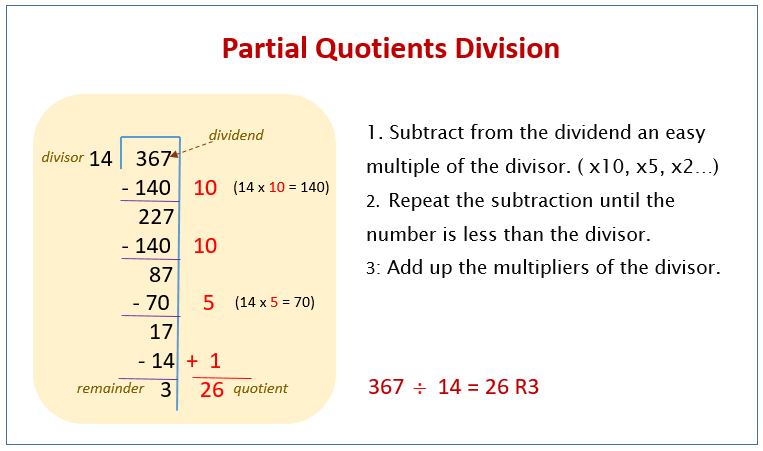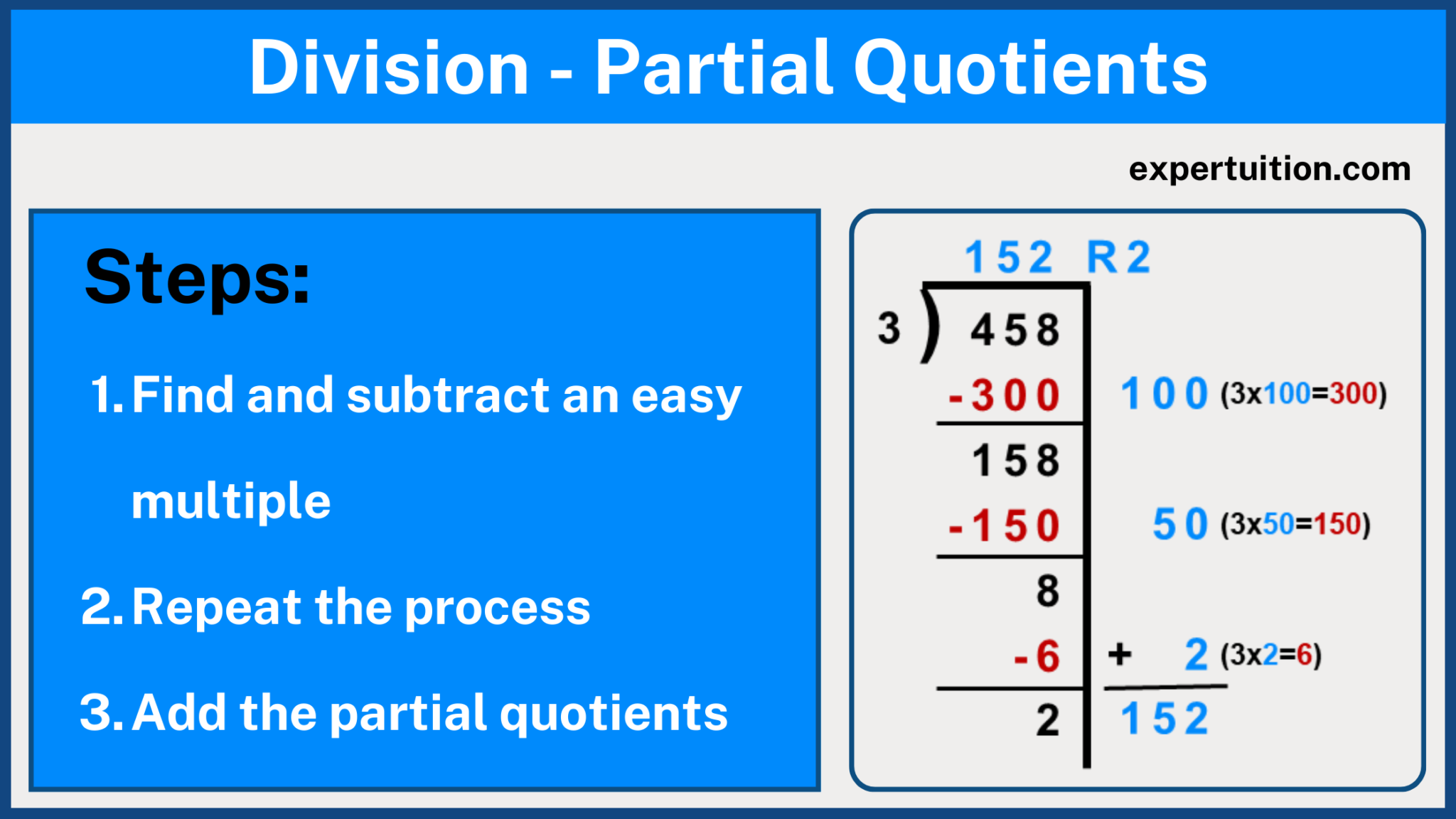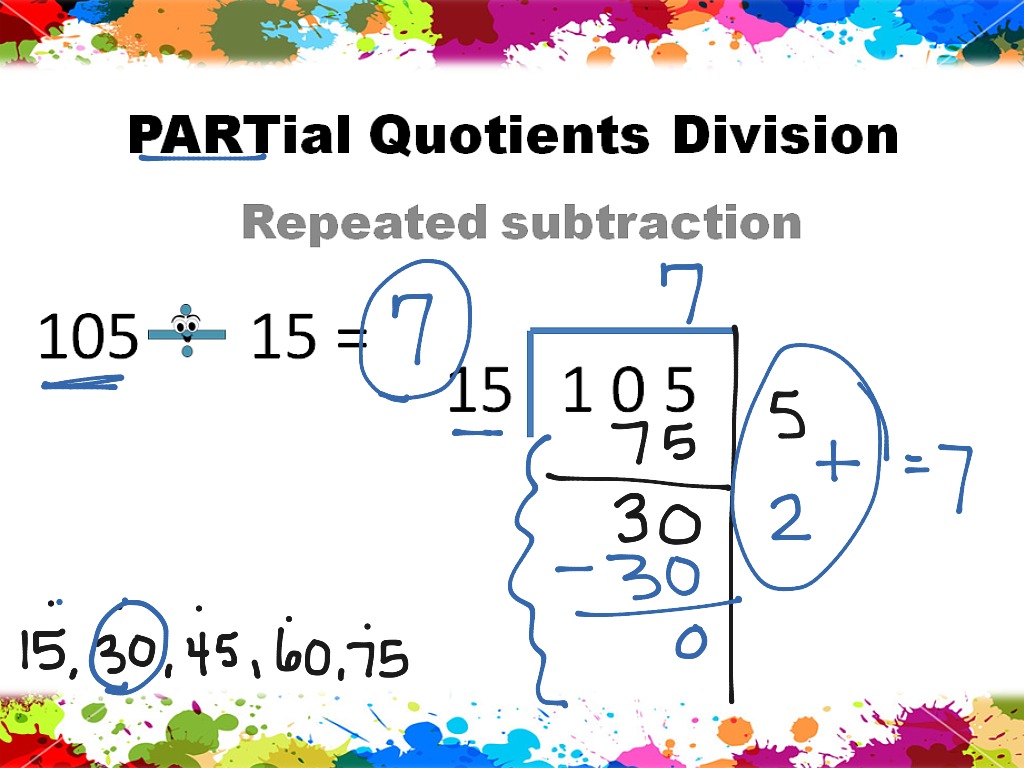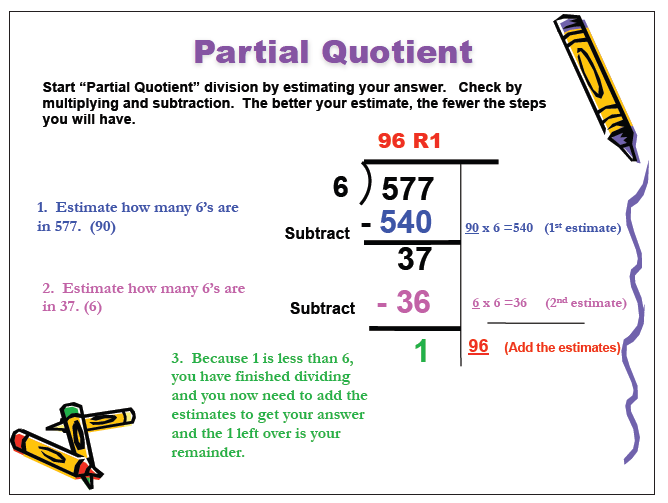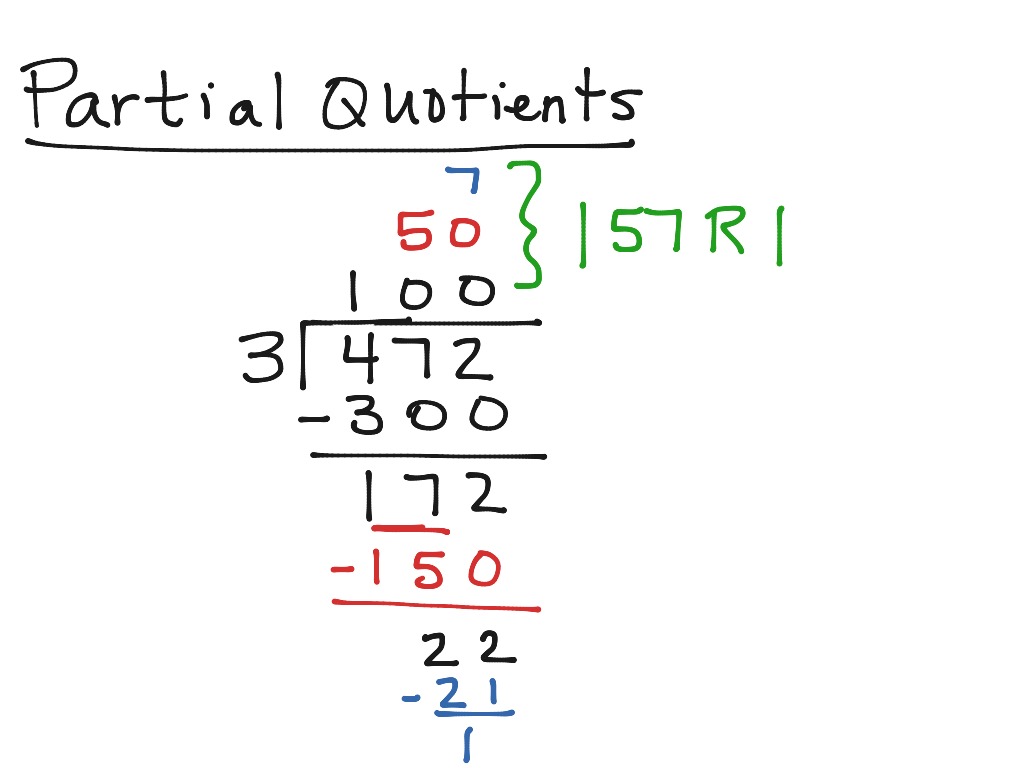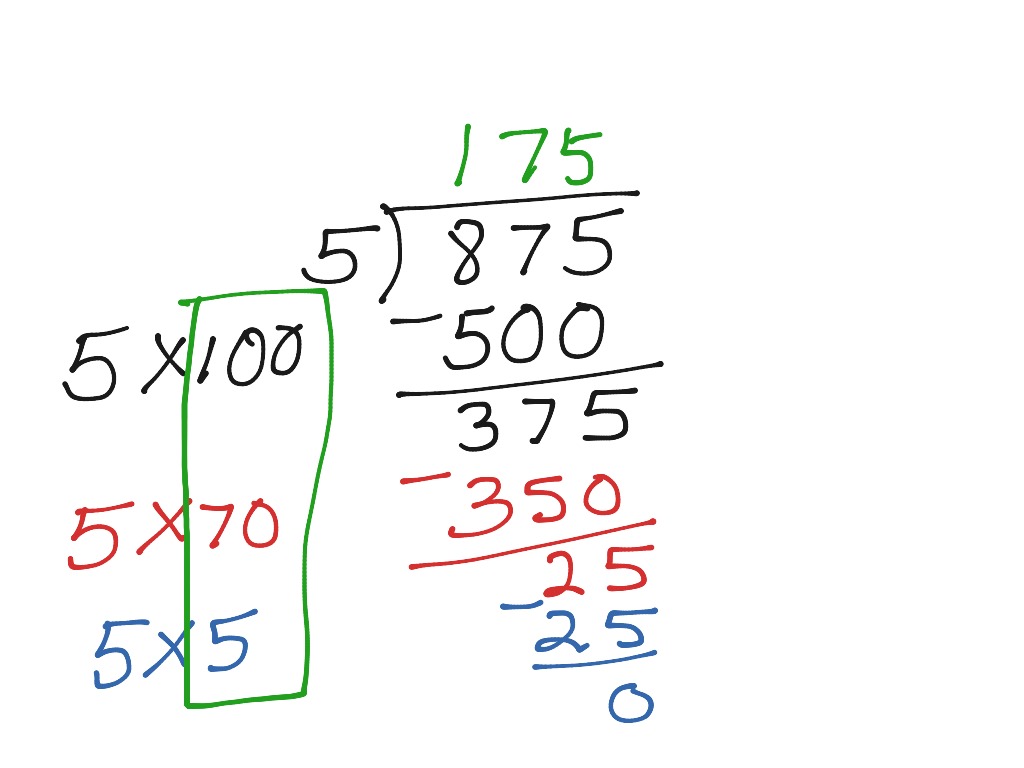How To Use Partial Quotients To Divide

Let's face it, the word "division" can send shivers down anyone's spine. Forget scary movies; long division is the real monster under the bed! But what if I told you there's a secret weapon against this mathematical beast?
Meet Partial Quotients: The Friendly Division Method
It's called partial quotients, and it's like division with training wheels. Think of it as giving the answer in bite-sized pieces, instead of trying to swallow the whole thing at once. It's surprisingly intuitive, and dare I say, even a little fun!
The "How To" in Plain English
Imagine you're sharing 75 cookies among 5 friends. (Lucky friends!) With partial quotients, you don't have to instantly know how many cookies each friend gets.
First, ask yourself, "Can I give each friend 10 cookies?" Sure! That's 50 cookies total (10 x 5 = 50).
Write down that "10" as one of your partial quotients. Then, subtract the 50 cookies you just gave away from the original 75. You now have 25 cookies left.
Next question: "Can I give each friend another 5 cookies?" Absolutely! That uses up all 25 cookies (5 x 5 = 25).
Add that "5" to your list of partial quotients. You're left with zero cookies. Hooray, the cookie monster is defeated!
Now, the grand finale: add up all those partial quotients you wrote down: 10 + 5 = 15. Each friend gets 15 cookies! Easy peasy, right?
Why Partial Quotients is Like Learning to Ride a Bike
Remember learning to ride a bike? You probably started with training wheels. Partial quotients are like those training wheels for division.
It allows you to get a feel for the process without the pressure of immediately finding the perfect answer. You can use numbers you're comfortable with, like 10s, 5s, or even 2s.
As you get better, you can ditch the "training wheels" and use larger numbers, solving problems more quickly. But the beauty of partial quotients is that it always works, no matter what numbers you choose!
The Heartwarming Side of Division
Beyond the math, partial quotients highlights something important: there's often more than one way to reach a solution. It embraces the idea that different people might think about division in slightly different ways.
It's like a mathematical group hug! It's about finding the path that makes sense to you.
So, the next time you're faced with a division problem, don't panic. Embrace the partial quotients method and discover the surprisingly friendly side of this mathematical operation. You might just find yourself enjoying it!
Remember long division? Who needs it!

